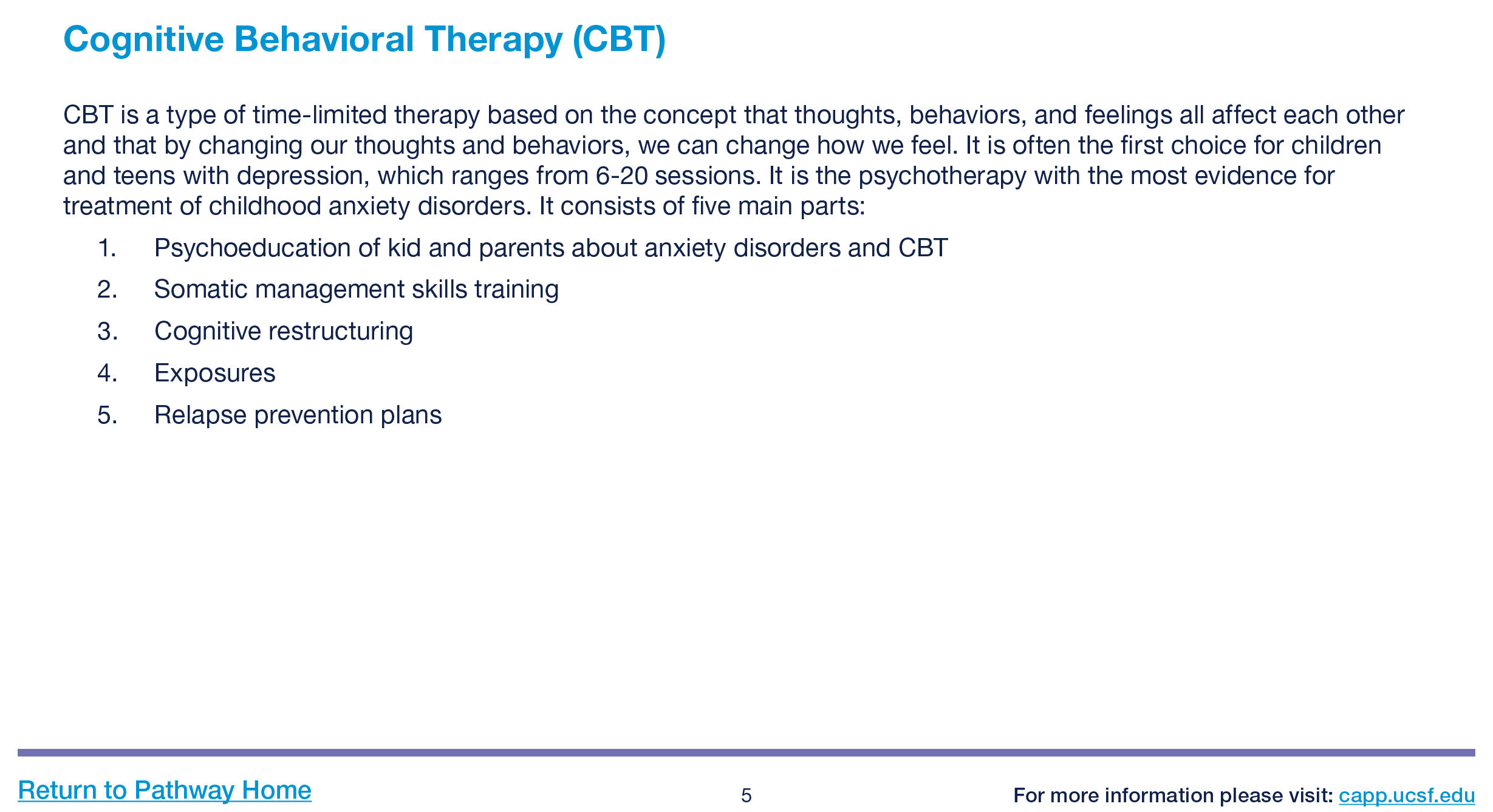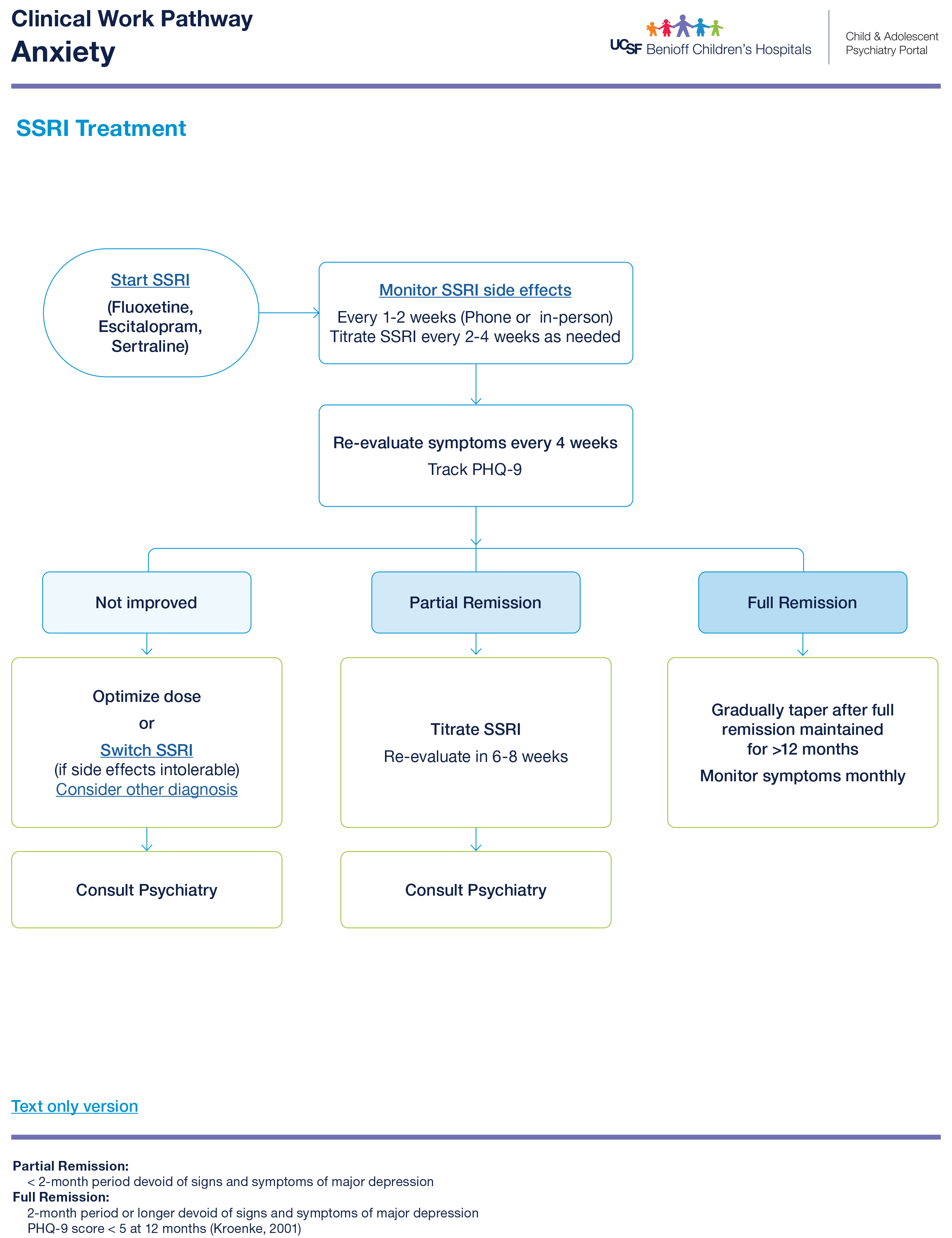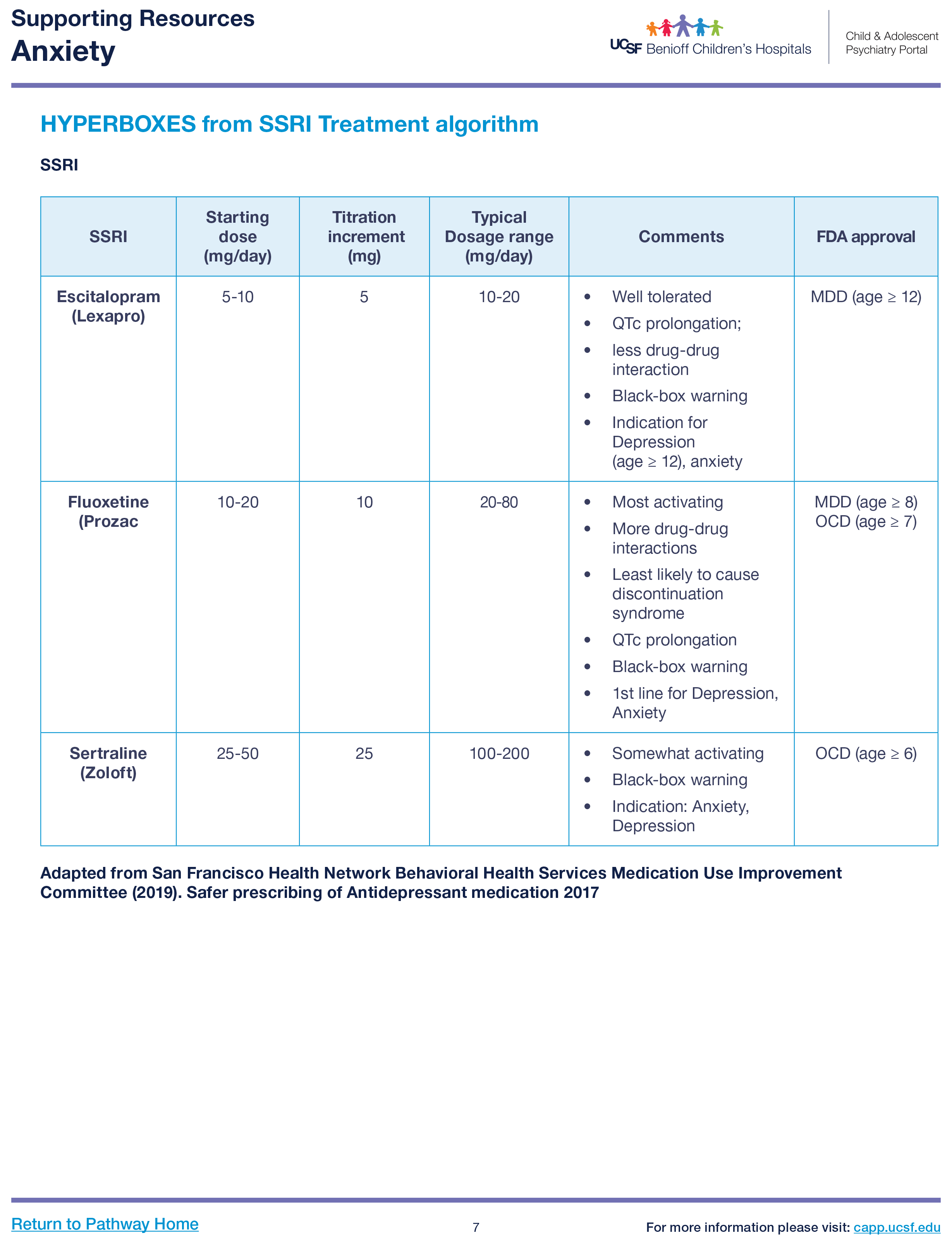Psychoeducation

-
Normalization
-
Anxiety is a normal part of life. Everyone experiences anxiety sometimes, but it can become a problem if it’s causing you a lot of distress or getting in the way of your functioning. Our brains use the fight, flight, or freeze response to help us stay safe. Have you heard of this before? Basically, it means that when our brains perceive a threat, we often respond by fighting (arguing, irritability), fleeing (avoidance), or freezing (shutting down). While a little anxiety can be helpful, too much can get in the way of things. For instance, a little anxiety might help motivate you to study for your test, but too much anxiety can lead to procrastination (avoidance) which while in the short term may make you feel better, isn’t helpful in the long term.
-
-
Education on Avoidance
-
Avoidance is one of the key parts of anxiety. When something makes us anxious, we tend to avoid it (flight response) which then temporarily relieves the anxiety. However, most of the things that we worry about we can’t avoid forever, and the more we avoid something the bigger the anxiety gets. Like in the studying procrastination example, the longer you put off studying for a test, the more the anxiety builds. This creates a feedback loop where the more anxious someone is, the more they avoid, and the bigger the anxiety gets.
-
Exposures are a strategy for stopping this feedback loop. Exposures are the opposite of avoidance; you expose yourself to what’s making you anxious instead of avoiding it. While this increases your anxiety short term, with continued exposures your anxiety goes down. This is due to a process called habituation where your body gets used to things over time. Exposures are approached in a stepwise manner; you start by exposing yourself to something that’s a little anxiety-provoking and practice tolerating that. Once that’s okay, you gradually practice exposures to medium and then very anxiety-provoking things. For instance, if someone is afraid of snakes, they might start by talking about snakes, then looking at pictures, then a video, gradually working up to managing their anxiety while seeing a live snake. If your anxiety is milder, you can practice exposures at home with the support of your family and written resources. If your anxiety is more severe, you can work with a therapist to practice exposures as part of a treatment called Cognitive Behavioral Therapy (CBT).
-
Relaxation Technique
Strategies to calm down the body’s fight or flight response and reduce anxiety.
Deep breathing
1. Belly breathing
-
Sit comfortably with hands on belly.
-
Breath in slowly through your nose.
-
Imagine you are blowing up a balloon that is expanding against your hand.
-
Breathe out slowly through your mouth, deflating the balloon.
-
Try to make your exhale longer than your inhale.
2. 3-4-5 breathing
-
Inhale for 3 counts
-
Hold for 4 counts.
-
Exhale for 5 counts
3. Fun ways to practice breath control: pinwheels, blowing bubbles, whistling.
Muscle Relaxation: tensing muscles and then releasing them allows them to relax.
Robot Ragdoll
-
First try to be stiff like a robot, keep your muscles tight.
-
Then relax all your muscles, try to be floppy like a ragdoll.
Progressive muscle relaxation (PMR)
-
Sequentially tense then relax each muscle group.
-
Start by curling your toes tight for 5 seconds then release.
-
Then tense your calves for 5 seconds then release.
-
Gradually move up to the head.
-
Analogies, such as shrugging your shoulders like a turtle, can be helpful for younger children.
Imagery
-
Think of a place that is calming for you.
-
Imagine every detail, including each sense (sights, sounds, smell, taste, feel)
Mantra – A phrase to help calm and refocus.
-
Think of a coping thought.
-
Practice repeating this phrase when you’re anxious.
-
Examples: “This too shall pass”, “I am enough”, “I can control my panic with breathing”
Cognitive Behavioral Therapy (CBT)
 CBT is a type of time-limited therapy based on the concept that thoughts, behaviors, and feelings all affect each other and that by changing our thoughts and behaviors, we can change how we feel. It is often the first choice for children and teens with depression, which ranges from 6-20 sessions. It is the psychotherapy with the most evidence for treatment of childhood anxiety disorders. It consists of five main parts:
CBT is a type of time-limited therapy based on the concept that thoughts, behaviors, and feelings all affect each other and that by changing our thoughts and behaviors, we can change how we feel. It is often the first choice for children and teens with depression, which ranges from 6-20 sessions. It is the psychotherapy with the most evidence for treatment of childhood anxiety disorders. It consists of five main parts:
1. Psychoeducation to both child and parent about anxiety disorders and CBT
2. Somatic management skills training
3. Cognitive restructuring
4. Exposures
5. Relapse prevention plans
First-line recommended medication: SSRI (Fluoxetine, Sertraline)
Indications
-
Limited improvement with therapy
-
Anxiety interfering with ability to engage in therapy, exposures.
-
Severe Anxiety (GAD-7 > 16)
-
Comorbid disorder requires treatment.
-
Continue SSRI for at least 6 months into remission before considering weaning off medication.
-
SSRI treatment flow chart


